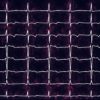There is extensive research on how a fixed-position flap affects lift in the realm of fluid-structure interaction. However, taking the conversation in a new direction, researchers at the University of Illinois Urbana-Champaign conducted a bio-inspired study with a novel twist—variable stiffness—to learn more about how it affects lift. The study, “Bio-inspired variable-stiffness flaps for hybrid flow control, tuned via reinforcement learning,” was written by Nirmal J. Nair and Andres Goza. It is published in the Journal of Fluid Mechanics.
The researchers wondered if they could model a flap on an airfoil, or wing, with varying stiffnesses over time much like a bird can tense, or stiffen, the musculature and tendons connected to covert feathers.
“We know from previous studies that having a flap with some stiffness could help increase lift in the stall regime,” said Andres Goza, professor of aerospace engineering at UIUC. “So, that begged the question: What if you could tune the stiffness? How much benefit would there be?”
The results of the study showed a big benefit. “Our flap with a variable stiffness was better than having no flap by 136% and 85% better than the best possible single stiffness flap from an earlier study we conducted.”
Goza and his student Nirmal Nair modeled a variable stiffness actuator on a flap hinged to an airfoil via a torsional spring to create a hybrid controller that changes the stiffness over time. The flap itself cannot flop or bend in any way. The stiffness refers to how tightly the torsional spring is holding onto the flap.
“In the simulation, we trained a controller that determined a specific value on the spectrum from very stiff to very loose. The controller was built using reinforcement learning, and trained to select a stiffness to improve lift on the airfoil,” Goza said.
“Using the variable stiffness actuators, we obtain the changes in stiffness values of the spring. The spring is a simplified model. In practice, this functionality can be implemented using variable stiffness actuators, though this is a non-trivial step that would require a new research effort, beyond the scope of what we looked at. The results of our tunable stiffness paradigm were compared to the best possible single stiffness case, obtained by building a performance map for several different simulations corresponding to a single stiffness value each.”
Goza said the lift improvements are achieved due to large-amplitude flap oscillations as the stiffness varies over four orders of magnitude.
“For the first nine time units, the controller tried different stiffnesses and learned what happened,” Goza said. “Then we turned it loose for the remainder of the simulation: at a given instance in time, it decides to change the stiffness and actively adapt over time based on what the flow is doing to get a boost in lift.”
Goza said it is complicated to develop a control strategy like this one.
“As the stiffness changes, the flap moves. Then the flap motion changes the airflow around it, so there is a complex coupling going on,” Goza said. “Now the flap will respond differently to the change of the flow field around it and as the flow field changes, the response of the flap will change again. Simulating this two-way coupling is a source of complexity.
“A strength of our work is that we model all of that. We fully account for the two-way coupling between the structural motion and the response. And that’s key to developing an accurate controller. We need to be able to say, when I change the stiffness, here’s the interplay that will happen and harness that to give it a better lift.”
Goza said most often when people think about control, it’s about feedback. We receive information about a system, then use that information to make a decision. There are consequences, and you keep auto-correcting.
“This hybrid controller tunes the stiffness, but we call it hybrid because we don’t directly control the flap motion. We’re just saying the flap has a specific stiffness, and I am going to actuate that and change the stiffness. Everything that happens next is based on the physics of that stiffness. The flap will feel what’s happening in the flow and start deploying of its own accord. And it’s going to start inducing these other dynamics.”
Goza said the most natural application for this research is unoccupied vehicles that have onboard computers.
“For these smaller aircraft, gusts can have a much larger impact,” Goza said. “They need to be more maneuverable, for example in natural disasters there may be a need to reach a location where humans can’t easily travel.”
He added that computation has utility “because you can allow the controller to vary the stiffness across 4 orders of magnitude, and whatever the resulting number is just gets used in the simulation. You’re not constrained by physical limitations. That lets us explore parameter spaces that we wouldn’t otherwise know about, and use that as a springboard to motivate clever experimentalists to realize these parameter ranges.”
“At this point in the research, the structural designs that undergo the required stiffness changes don’t exist. So, in this way computation can inspire material scientists to develop new materials/structural design paradigms that can do it,” Goza said.
More information:
Nirmal J. Nair et al, Bio-inspired variable-stiffness flaps for hybrid flow control, tuned via reinforcement learning, Journal of Fluid Mechanics (2023). DOI: 10.1017/jfm.2023.28
Provided by
University of Illinois at Urbana-Champaign
Citation:
Model simulates variable flap stiffness in a wing for the best lift (2023, April 6)



